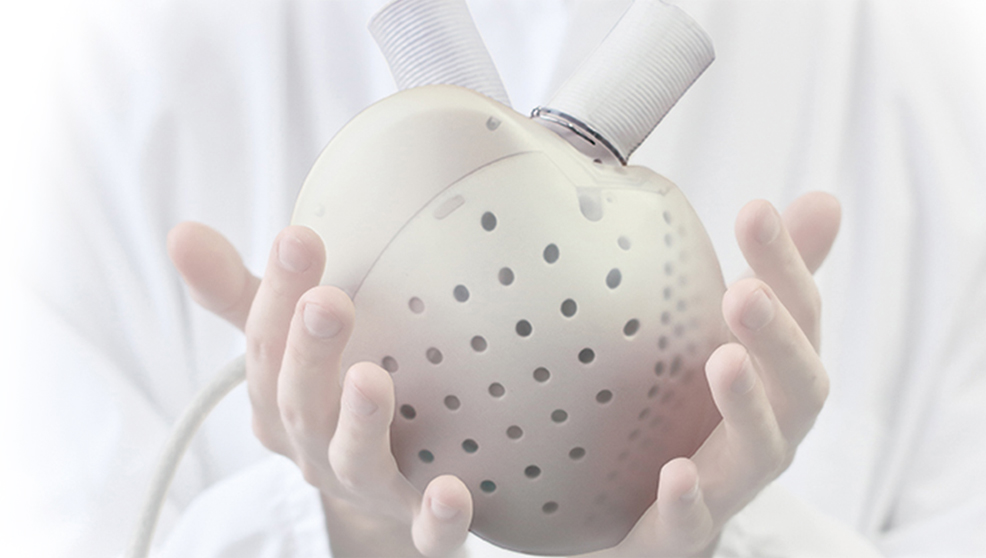
27th July 2021 Next-generation artificial heart implanted in first U.S. patient Surgeons at Duke University Hospital in North Carolina, USA, have successfully implanted a next-generation artificial heart in a 39-year-old man with heart failure, becoming the first medical team in North America to perform the procedure.
The new device, developed by French biotech company Carmat, has been studied in Europe, where it is approved for use. Last year, the company received approval from the FDA for studies in the U.S. to potentially enrol 10 patients with end-stage biventricular heart failure. The ongoing study will evaluate whether the artificial heart is a viable option as a life-saving step before transplant. "We are encouraged that our patient is doing so well after the procedure on Monday," said Dr. Carmelo Milano, a transplant surgeon and lead researcher at Duke. "As we evaluate this device, we are both excited and hopeful that patients who otherwise have few to no options could have a lifeline." The patient, Matthew Moore, was referred to Duke last month after a sudden, unexpected diagnosis of heart failure. Moore and his wife, Rachel, arrived at Duke expecting only to undergo heart bypass surgery. As Moore's condition quickly deteriorated, however, traditional options – including transplant – became too risky. Meanwhile, Duke was among just three transplant centres in the United States selected to join the device study, and the procedure team received specialised training to prepare for the implant surgery.
"As a nurse, I understand how important it is to bring these advancements forward," said Rachel Moore. "Both Matthew and I are so grateful that we've been provided an opportunity to participate in something that has the potential to have an impact on so many lives. We are just taking it day-by-day and hope everything continues to progress well." The artificial heart is an implantable prosthetic that includes biological valves derived from bovine tissue. Power is supplied by a belt-worn external unit and the heart is electro-hydraulically driven, with a shape close to that of a real human heart. Once connected, it duplicates the action of a normal heart and provides mechanical circulatory support, restoring normal blood flow through the body. Embedded sensors automatically adapt the blood flow depending on a person's level of physical activity. This feature is a major improvement over current "fixed-rate" artificial hearts. If the device receives FDA approval, it will provide a bridge to transplant for patients whose hearts need assistance to pump blood through both chambers. Current technology – notably a left-ventricular assist device (LVAD) – supports just one chamber. "Because of the shortages of donor hearts, many patients die while waiting for a heart transplant," said Dr. Jacob Schroder, a transplant surgeon who led the implant procedure. "We are hopeful for new options to help these patients, many like Mr. Moore who have devastating disease and cannot otherwise be considered for a transplant."
Comments »
If you enjoyed this article, please consider sharing it:
|







